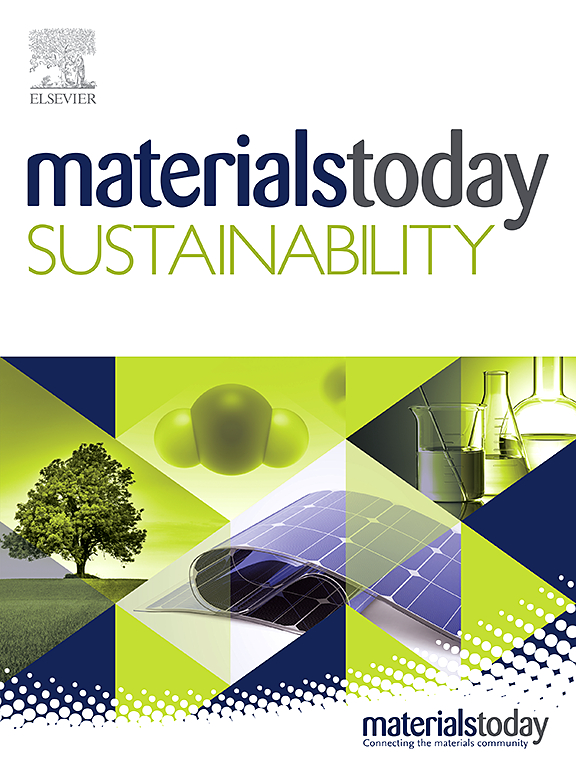Hydro-mechanical behaviour of phosphogypsum-based water-absorbent polymers in wastewater sludge
IF 7.9
3区 材料科学
Q1 GREEN & SUSTAINABLE SCIENCE & TECHNOLOGY
引用次数: 0
Abstract
Ultra-high water content is generally presented in wastewater sludge, and rapid water removal during disposal is the key to recycling. This study aims to explore a novel approach for rapidly reducing the ultra-high water content of sludge using a phosphogypsum-based water-absorbent polymer (PG-WAP), synthesized from phosphogypsum (PG), ordinary Portland cement (OPC), and ground granulated blast furnace slag (GGBS). Firstly, bentonite was selected as an additive to enhance the degree of pozzolanic reaction in PG-WAP. Then, the effectiveness of PG-WAP for drying sludge is evaluated using water absorption measurements and unconfined compressive strength (USC) tests, and the water absorption mechanisms are revealed by X-ray diffraction (XRD), thermal analysis (TGA), and scanning electron microscopy (SEM). Finally, the economic benefits of PG-WAP for drying sludge were assessed and compared with conventional drying methods. The results indicate that PG-WAP demonstrates an excellent drying effect, with an average water absorption rate of 53 %. Microstructure characterization shows that the synergy between bentonite and PG leads to the formation of non-expansive AFt, which enhances structural integrity and mitigates the strength reduction associated with high PG content. Moreover, PG-WAP combined with PG-based solidification agent, enables simultaneous drying and solidification of sludge in a single mixing process.

磷石膏基吸水聚合物在污水污泥中的水力学行为
废水污泥普遍存在超高含水率,处理过程中快速除水是回收利用的关键。本研究旨在探索一种利用磷石膏(PG)、普通硅酸盐水泥(OPC)和粉状高炉矿渣(GGBS)合成的磷石膏基吸水聚合物(PG- wap)快速降低污泥超高含水量的新方法。首先,选择膨润土作为添加剂,提高PG-WAP中火山灰反应的程度。然后,通过吸水测试和无侧限抗压强度(USC)测试来评价PG-WAP干燥污泥的有效性,并通过x射线衍射(XRD)、热分析(TGA)和扫描电子显微镜(SEM)揭示了吸水机理。最后,对PG-WAP干燥污泥的经济效益进行了评价,并与常规干燥方法进行了比较。结果表明,PG-WAP具有良好的干燥效果,平均吸水率为53%。微观结构表征表明,膨润土与PG之间的协同作用导致了非膨胀AFt的形成,增强了结构的完整性,减轻了高PG含量带来的强度降低。此外,PG-WAP与pg基固化剂相结合,可以在一次混合过程中同时干燥和固化污泥。
本文章由计算机程序翻译,如有差异,请以英文原文为准。
求助全文
约1分钟内获得全文
求助全文
来源期刊

Materials Today Sustainability
Multiple-
CiteScore
5.80
自引率
6.40%
发文量
174
审稿时长
32 days
期刊介绍:
Materials Today Sustainability is a multi-disciplinary journal covering all aspects of sustainability through materials science.
With a rapidly increasing population with growing demands, materials science has emerged as a critical discipline toward protecting of the environment and ensuring the long term survival of future generations.
 求助内容:
求助内容: 应助结果提醒方式:
应助结果提醒方式:


